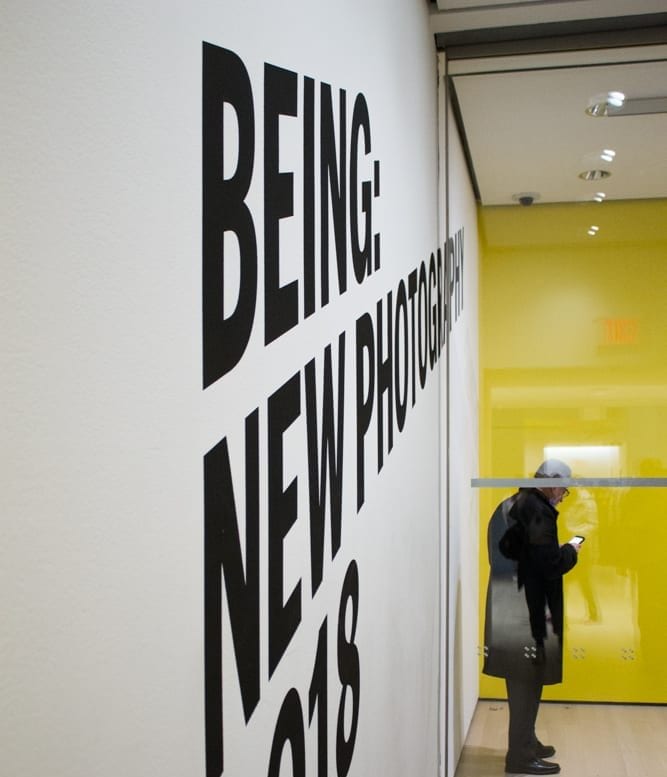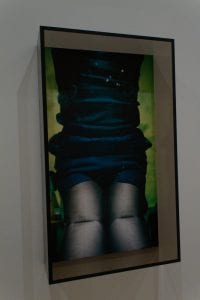Ingrid Olson, Felt Angle, box for standing, 2017
With this piece, the photo isn’t presented in a traditional frame, instead it is exhibited in a shadow box, immediately drawing the viewer into it. In addition to the initial presentation of the piece, the subject matter of a woman’s torso and upper thighs fills the entire frame, making the subject matter impossible for the viewer to ignore. Because the frame is entirely filled with the subject, in addition to leading horizontal lines, the viewer is challenged to continue to look at the photo, instead of looking away out of discomfort. Olson used the technique of UV-printing, which allows the image to become a part of the material it was printed on, which was in this case, plexiglass. With the intentional uncomfortable composition, and unusual printing method, the photographer created a piece that not only was technically excellent, but also challenged the viewer to look beyond the aesthetics of the image and into the deeper concept.
Sam Contis, Denim Dress, 2014
In this photograph, I was initially attracted to the subject matter, and how it drastically affected the tone of the piece. The photograph depicts a figure in a denim dress, which contrasts the green grass that the subject is laying on. The subject is positioned in a manner so that they provide leading lines for the viewer, as they follow the feet, torso then hands of the subject to the face. Because of the contrast of colors, as well as the leading lines and triangulation, the composition is successful as a whole. The artist used traditional compositional techniques to create a clear tone of distress in the piece. The artist used an inkjet printer to print the piece, which is a method that I am familiar with for high quality printing.
Huong Ngo and Hong-An Truong, The opposite of looking is not invisibility. The opposite of yellow is not gold. 2016
In this series of photographs, the artists used their family albums as “snapshots” to feature their mothers who were born in Vietnam, but fled to the United States as refugees. Through composing this set of images, the artists found striking similarities between both of their mothers, as well as the family photos themselves. Interlaced with the photos are quotes from congressional testimonies which generalize Vietnamese refugees as “aliens” or “illegals”. By juxtaposing personal family photographs with impersonal judiciary language, the artists present a nuanced point of view of the Vietnamese American experience to viewers who don’t necessarily understand the struggles refugees face. With the use of old family photos, the artists don’t use traditional compositional techniques to attract viewers to their piece, they use the relatable concept of family photographs to connect to the viewer in a way that the impersonal congressional language cannot.




Comments